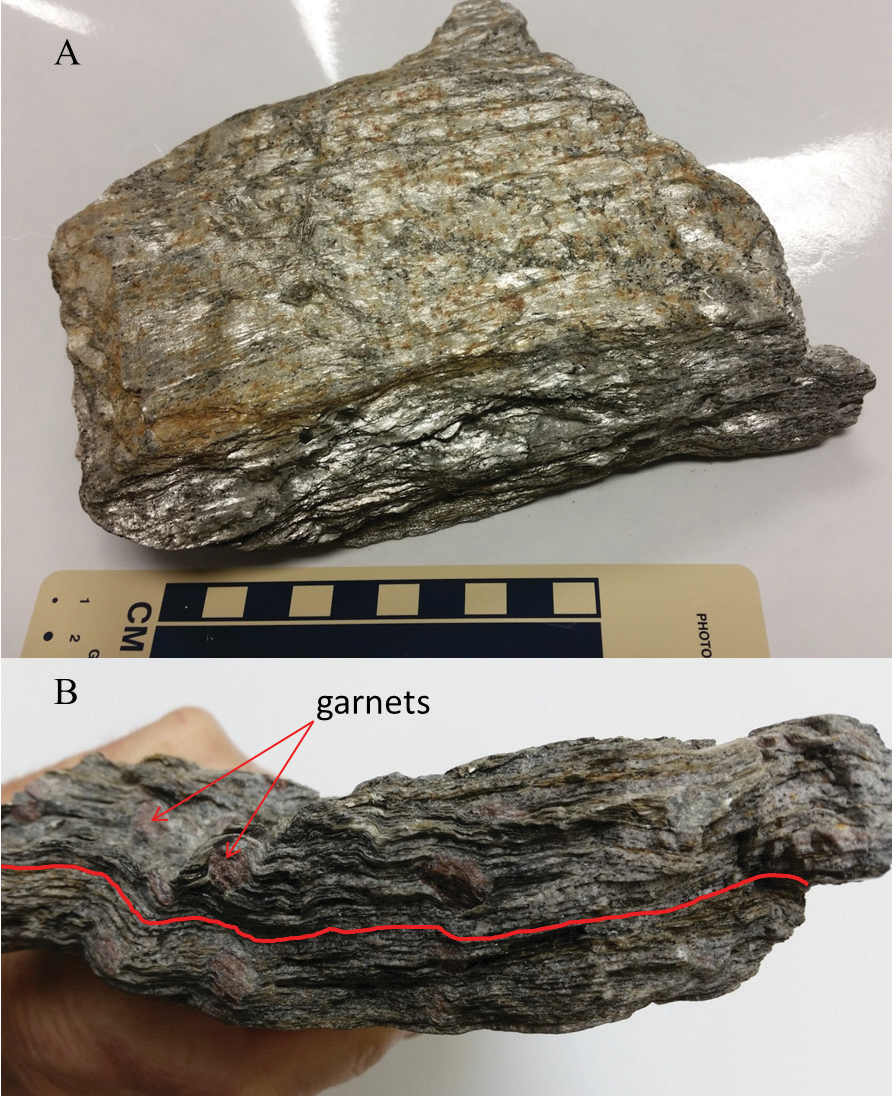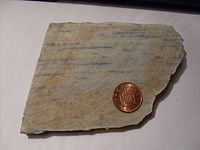Metamorphic Rock Textures: The Ultimate Visual Guide
I remember the first time I held a piece of gneiss. It was a nondescript rock, picked up during a field trip in the Adirondacks. But when our professor pointed out the distinct banding, the alternating layers of light and dark minerals, a whole new world opened up. I realized that this wasn't just a rock; it was a story, written in the language of pressure, temperature, and time. This experience sparked a lifelong fascination with metamorphic rocks, and their fascinating textures.
Understanding Metamorphic Rock Textures
Metamorphic rock textures are the visual and physical arrangements of mineral grains within a metamorphic rock, reflecting the conditions under which the rock was transformed. They provide invaluable clues about the metamorphism types, the intensity of the metamorphic process (metamorphic grade), and the overall geological history of a region. These textures arise from the interplay of several factors, including the original composition of the parent rock (protolith), the imposed pressure and temperature, the presence of fluids, and the duration of the metamorphic event. Recognizing these textures allows geologists to reconstruct the metamorphic history of a rock and infer the tectonic setting in which it formed.
Factors Influencing Metamorphic Textures
The resulting texture of a metamorphic rock is a direct consequence of the physical and chemical changes that occur during metamorphism. These changes are governed by several key factors:
- Temperature: Increased temperature accelerates chemical reactions and allows for the recrystallization of minerals. Higher temperatures generally lead to larger crystal sizes.
- Pressure: Directed pressure, especially differential stress, causes minerals to align perpendicular to the direction of maximum stress, leading to mineral alignment and the development of foliated textures.
- Fluid Activity: The presence of fluids, such as water, acts as a catalyst, facilitating the transport of ions and promoting mineral growth.
- Composition of the Protolith: The initial mineral composition of the parent rock dictates the possible range of metamorphic minerals that can form.
- Time: The longer a rock is subjected to metamorphic conditions, the more complete the metamorphic transformation will be, often resulting in coarser-grained textures.
Foliated Metamorphic Textures
Foliated textures are characterized by a parallel alignment of platy or elongate minerals, giving the rock a layered or banded appearance. This alignment is primarily due to the directed pressure experienced during metamorphism. The degree of foliation, as well as the type of minerals that align, varies depending on the metamorphic grade and the protolith composition. Here, we explore some of the most common types of foliated textures:
Types of Foliated Textures
- Slate Texture: Slate texture is the finest-grained type of foliation, characteristic of slate. It is formed by the parallel alignment of microscopic platy minerals, such as clay minerals and micas. Slate exhibits excellent rock cleavage, meaning it breaks easily along parallel planes, producing flat sheets. This texture typically forms at low metamorphic grade.
- Phyllite Texture: Phyllite possesses a slightly coarser-grained foliation than slate, giving it a silky or sheen-like luster. The platy minerals, mainly sericite mica and chlorite, are still very fine-grained but large enough to reflect light. The foliation surfaces may be slightly wrinkled or folded.
- Schist Texture: Schist texture is characterized by a medium- to coarse-grained foliation, where individual platy minerals, such as micas (biotite, muscovite), chlorite, and talc, are easily visible to the naked eye. The minerals are aligned in a subparallel fashion, giving the rock a distinct schistosity. Schists often contain porphyroblasts, which are larger, isolated crystals embedded within the finer-grained matrix. Schist texture forms at intermediate metamorphic grade.
- Gneissic Texture: Gneiss texture (also called gneissosity) is the coarsest-grained type of foliation. It is characterized by alternating layers or bands of light-colored minerals (quartz, feldspar) and dark-colored minerals (biotite, amphibole). This compositional banding results from the segregation of minerals during high-grade metamorphism. While minerals are aligned, the alignment is not as perfect as in schists, giving the rock a more irregular appearance. Gneiss texture is common in high-metamorphic grade rocks.

Non-Foliated Metamorphic Textures
Non-foliated textures lack a preferred orientation of mineral grains. These textures typically form when metamorphism occurs in the absence of significant directed pressure, such as in contact metamorphism or regional metamorphism where hydrostatic pressure dominates. The resulting rock is typically massive and homogenous, without any obvious layering or banding.
Common Non-Foliated Textures
Several types of non-foliated textures are recognized, reflecting different crystallization and recrystallization processes:
- Granoblastic Texture: This is the most common type of non-foliated texture. It is characterized by an interlocking mosaic of equidimensional, randomly oriented mineral grains. The grains are typically anhedral (lacking crystal faces) to subhedral (partially developed crystal faces), and the overall texture resembles a granular mass. Quartzite and marble are common examples of rocks with granoblastic textures.
- Hornfelsic Texture: This fine-grained, non-foliated texture is characteristic of hornfels, a rock formed by contact metamorphism. The texture is similar to granoblastic, but the grains are typically smaller and more uniform in size. Hornfels often exhibits a dark, dense appearance.
- Porphyroblastic Texture (in Non-Foliated Rocks): While porphyroblasts are more commonly associated with foliated textures, they can also occur in non-foliated rocks. In this case, large, isolated crystals (porphyroblasts) are embedded within a finer-grained, granoblastic matrix.
- Decussate Texture: A less common texture where platy or elongate minerals are randomly oriented, intersecting at various angles, giving the rock a felt-like appearance. This can sometimes be observed in rocks with radiating crystals.

Metamorphic Grade and Texture Development
The metamorphic grade, which refers to the intensity of metamorphism (i.e., the temperature and pressure conditions), plays a crucial role in determining the final texture of a metamorphic rock. As metamorphic grade increases, mineral grain size generally increases due to enhanced crystallization and recrystallization. Furthermore, higher grade metamorphism promotes the development of more pronounced foliation and compositional banding.
| Metamorphic Grade | Typical Textures | Characteristic Minerals | Example Rock |
|---|---|---|---|
| Low Grade | Slate texture, fine-grained | Clay minerals, chlorite, sericite | Slate |
| Low-Intermediate Grade | Phyllite texture, silky sheen | Sericite, chlorite, quartz | Phyllite |
| Intermediate Grade | Schist texture, medium- to coarse-grained | Mica (biotite, muscovite), garnet, staurolite | Schist |
| High Grade | Gneiss texture, banded | Feldspar, quartz, biotite, amphibole, sillimanite | Gneiss |
| Very High Grade | Granulite texture, coarse-grained, anhydrous minerals | Pyroxene, garnet, feldspar, kyanite | Granulite |
Pro Tips for Identifying Metamorphic Textures
Using a Hand Lens
A hand lens (10x magnification) is an indispensable tool for examining metamorphic rock textures. It allows you to resolve individual mineral grains and observe their arrangement, helping to differentiate between slate, phyllite, and schist.
Acid Testing
Performing a simple acid test (using dilute hydrochloric acid) can help identify carbonate-rich rocks like marble. A positive reaction (effervescence) indicates the presence of calcite or dolomite, which are common constituents of marble.
Assessing Hardness
The hardness of a metamorphic rock can provide clues about its mineral composition and metamorphic grade. For example, quartzite, which is composed primarily of quartz, is very hard (Mohs hardness of 7), while talc schist, which contains abundant talc, is very soft (Mohs hardness of 1).
FAQ: Common Questions About Metamorphic Textures
- What is the difference between foliation and lineation?Foliation is the parallel alignment of platy minerals, creating a layered appearance. Lineation, on the other hand, is the parallel alignment of elongate minerals, creating a linear fabric. Both can occur in the same rock.
- How does the presence of water affect metamorphic texture? Water acts as a catalyst, promoting chemical reactions and accelerating mineral growth. Rocks metamorphosed in the presence of abundant water tend to have larger grain sizes and more well-developed foliation.
- Can a metamorphic rock have both foliated and non-foliated textures? Yes, some metamorphic rocks can exhibit both foliated and non-foliated textures in different parts of the rock. This can occur due to variations in the local stress field or compositional differences.
- What are metamorphic facies, and how do they relate to textures?Metamorphic facies are a set of metamorphic mineral assemblages that are stable under a specific range of temperature and pressure conditions. Each facies is characterized by a distinct set of minerals and textures, providing a valuable tool for interpreting the metamorphic history of a rock.
Understanding metamorphic rock textures is fundamental to unraveling the complex history of our planet. By carefully observing the arrangement of mineral grains, we can decipher the pressure, temperature, and fluid conditions that shaped these rocks, providing insights into the tectonic processes that have sculpted the Earth's crust. What are some of your favorite metamorphic rock textures to identify? Share your thoughts and experiences in the comments below!